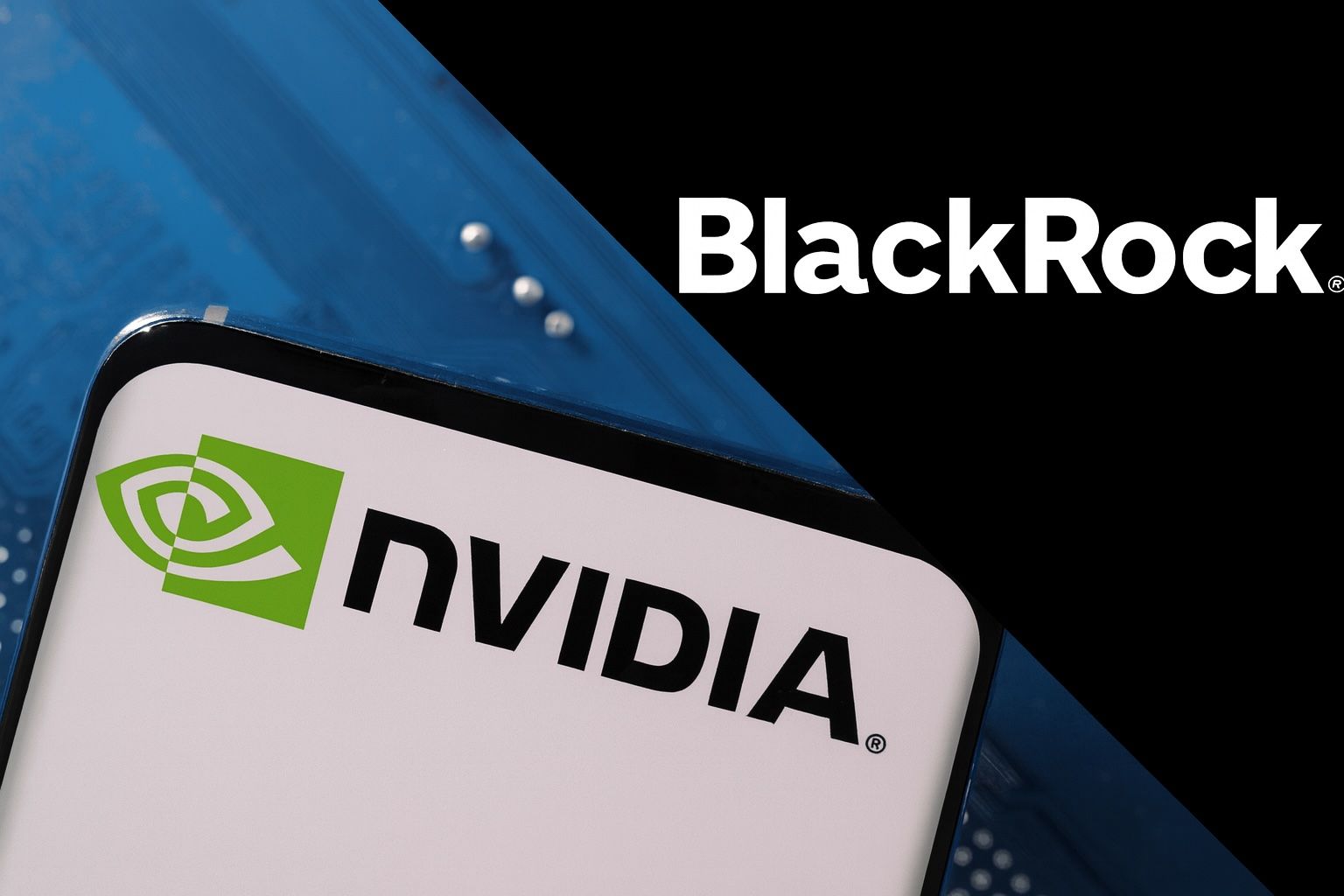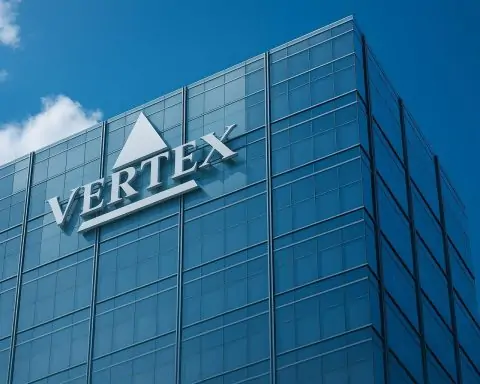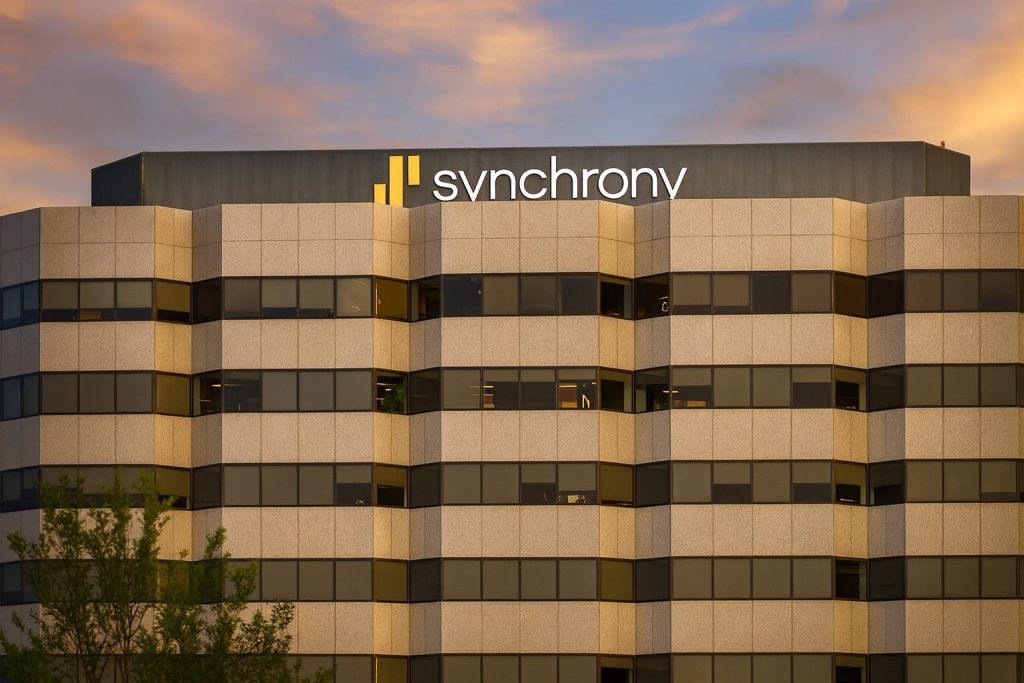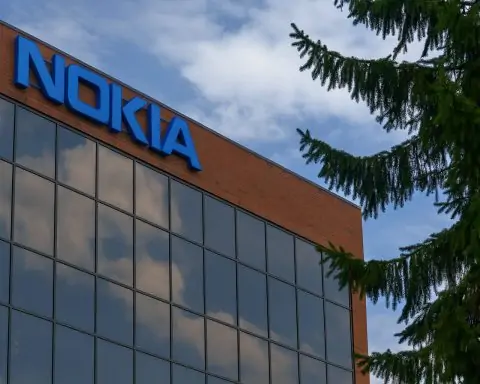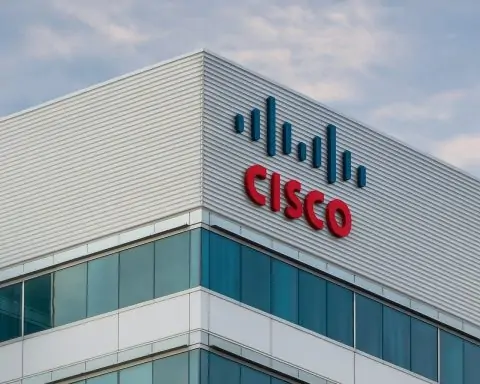- $40B AI infrastructure deal: An investor group led by BlackRock and Nvidia will acquire Aligned Data Centers from Macquarie Asset Management for approximately $40 billion [1]. The consortium, called the Artificial Intelligence Infrastructure Partnership (AIP), aims to “power the future of AI” by massively expanding data center capacity [2].
- Who’s in the consortium: AIP’s founding members include BlackRock (via its Global Infrastructure Partners unit), chipmaker Nvidia, Microsoft, and Elon Musk’s startup xAI, with major backers like Kuwait’s sovereign fund and Singapore’s Temasek [3]. It’s AIP’s first investment, and the group plans to deploy $30 billion in equity (up to $100 billion with debt) toward AI infrastructure projects [4].
- Aligned Data Centers at a glance: Dallas-based Aligned is a fast-growing operator of hyperscale data center campuses used for cloud and artificial intelligence workloads. It runs 50 data center campuses with over 5 gigawatts of current and planned capacity across the U.S. and Latin America [5]. Aligned raised $12 billion earlier this year – one of the largest-ever private financings for a data center company [6] – underscoring the huge capital needed to keep up with surging demand.
- AI arms race drives the deal: This acquisition highlights an “intensifying race” to build the costly, supply-constrained infrastructure needed for advanced AI models [7]. Industry-wide, cloud giants are expected to spend $400 billion on AI data centers in 2025 alone [8]. OpenAI, for example, recently secured about 26 gigawatts of computing capacity via partnerships – including a deal with AMD and up to a $100 billion investment from Nvidia in its next-gen AI systems [9].
- Stock market reaction: BlackRock’s stock jumped ~3% on the news (aided by strong Q3 earnings), while Nvidia’s stock fell ~4% amid broader tech volatility [10]. BlackRock (NYSE: BLK) traded around the mid-$1,100s per share, near all-time highs, as analysts applauded its AI ambitions [11]. Nvidia (NASDAQ: NVDA) shares, which hit a record ~$195 last week, pulled back to roughly $180 on Oct. 15 [12].
BlackRock & Nvidia Lead a $40 Billion Bet on AI Infrastructure
In a blockbuster deal underscoring the value of AI infrastructure, BlackRock and Nvidia are spearheading a consortium to buy Aligned Data Centers for approximately $40 billion [13]. The acquisition, announced Wednesday, will transfer Aligned from its current owner (Macquarie Asset Management and partners) to a new powerhouse partnership of tech and investment firms. BlackRock – the world’s largest asset manager – joined forces with semiconductor leader Nvidia and others to form the Artificial Intelligence Infrastructure Partnership (AIP), which will wholly acquire Aligned pending regulatory approvals by the first half of 2026 [14] [15].
Larry Fink, BlackRock’s CEO (and AIP’s chairman), said the move is about building the backbone for the next wave of computing. “With this investment in Aligned Data Centers, we further our goal of delivering the infrastructure necessary to power the future of AI,” Fink noted in a statement [16]. In less than a decade, Aligned has grown into one of the largest data center operators, designing and running “cutting-edge data campuses” for the world’s biggest cloud and AI players [17]. Its 50 campuses (totaling ~5 gigawatts of capacity) provide the massive power and cooling needed for AI model training and cloud services [18]. Aligned will remain headquartered in Dallas under CEO Andrew Schaap, as the consortium plans to inject capital to accelerate its expansion [19] [20].
An AI Data Center Arms Race Fueled by Billions
This mega-deal comes amid an arms race for AI infrastructure. Building and operating advanced AI models (like ChatGPT-style generative AI) requires tremendous computing power – and therefore huge investments in data centers. The Aligned acquisition “underscores an intensifying race” among companies to secure enough high-end server capacity as AI demand explodes [21]. The sector has already seen a “slew of mega-deals” focused on locking in coveted computing resources [22].
Just in recent weeks, OpenAI (creator of ChatGPT) unveiled agreements for about 26 gigawatts of new computing capacity – enough to power ~20 million U.S. homes – by partnering with cloud providers [23]. OpenAI also struck a 6 GW semiconductor supply deal with AMD and revealed that Nvidia plans to invest up to $100 billion in OpenAI while supplying it with systems delivering at least 10 GW more in data center power [24].
Wall Street is tallying the trend: Morgan Stanley estimates that big cloud players like Google, Amazon, Meta, Microsoft and startups like CoreWeave will spend about $400 billion on AI infrastructure in 2025 [25]. Even Aligned’s own $12 billion fundraising earlier this year – one of the largest private infusions for a data center firm – may be only a drop in the bucket [26]. “The scale of financing required to keep pace with demand is only growing,” Reuters observes, as hyperscalers and investors pour capital into server farms [27].
At the same time, this frenzy is raising questions about investor returns and potential overheating. The cost of cutting-edge AI infrastructure is so high that some are concerned about when (or if) profits will justify the spending [28]. There’s also a “circular” aspect – many AI players are investing in each other or buying each other’s services, blurring lines between customers and owners [29]. Nonetheless, the overall trend is clear: companies see advanced data centers as strategic assets for the AI era, akin to oil fields in the industrial age.
Who’s Behind the AI Infrastructure Partnership?
The Artificial Intelligence Infrastructure Partnership (AIP) buying Aligned is a who’s-who of tech and finance heavyweights. It was founded by BlackRock (through its Global Infrastructure Partners arm), Nvidia, Microsoft, and Abu Dhabi’s tech fund MGX, specifically to invest in next-generation AI infrastructure [30]. They’ve also brought on major sovereign investors – the Kuwait Investment Authority and Temasek (Singapore’s state fund) – as anchor backers [31]. Notably, xAI, the AI startup founded by Elon Musk, is part of the consortium as well [32], signaling how even upstart AI labs want a seat at the table in building out the physical backbone of artificial intelligence.
This is AIP’s first major investment, and it’s an ambitious start. The group has an initial war chest of $30 billion in equity to deploy, with the potential to scale to $100 billion including leverage [33]. The Aligned deal alone, at $40 billion enterprise value, will consume a big chunk of that. It instantly ranks among the largest tech infrastructure takeovers ever. For BlackRock, which manages over $9 trillion in assets, the transaction is led by its Global Infrastructure Partners (GIP) division – a unit formed in 2024 that has quickly become “uniquely suited” to mega-deals in digital infrastructure [34]. GIP’s mandate is to invest in the backbone of the digital economy, and it identified AI data centers as a prime target early on.
Other consortium members bring complementary strengths. Nvidia is not only contributing capital but is also the world’s dominant supplier of AI chips, so it has a vested interest in seeing more high-end data centers built (which will likely use Nvidia’s GPUs). Microsoft, as a top cloud provider and AI platform developer, likewise benefits from expanding infrastructure. And the involvement of Middle Eastern and Asian sovereign wealth funds underscores global confidence in the long-term demand for AI – as well as providing deep pockets to fund it.
Betting on the Backbone of AI’s Future – Strategy and Insight
BlackRock’s bold push into data centers is part of a broader strategy to “bet on the backbone of AI’s future,” as one tech analyst put it [35]. The Aligned acquisition gives BlackRock and partners control over a vast footprint of power-hungry server farms – essentially the factories of the AI age. “Digital infrastructure has become a top target for global investors,” notes a research report from AInvest, and the Aligned deal “signals a strategic bet on AI’s long-term trajectory.” [36] In other words, this consortium is wagering that demand for AI compute power will continue to skyrocket for years (or decades), requiring ever more data center capacity.
To support that bet, BlackRock’s infrastructure arm has been making parallel moves to secure energy and real estate for these operations. Recently, GIP won regulatory approval to buy U.S. utility Allete for $6.2 billion and is in advanced talks to take over power producer AES Corp. for around $38 billion [37]. Those deals would effectively lock in electricity generation and land — critical resources to feed current and future data centers. These moves “would secure power and land for AI data centers,” observers note, tying together the pieces of an AI supply chain [38]. By owning both the energy source (utilities) and the energy sink (data centers), BlackRock and its partners aim to mitigate bottlenecks that could slow the AI boom.
Nvidia, for its part, has seen its fortunes soar with the AI wave. The chipmaker’s valuation has swelled into the trillions as its GPUs became essential for AI workloads, and its revenue from data center chips jumped 56% year-on-year last quarter [39]. Nvidia’s involvement in AIP further cements its influence across the AI value chain – from silicon to supercomputers to now the physical sites housing them. It recently peaked at an all-time high stock price (~$195/share) amid optimism about AI demand [40]. By joining the Aligned deal, Nvidia can help shape data center design to favor its technology and ensure ample capacity for customers buying its chips.
Not everyone is cheering unabated spending, however. Some investors have expressed concern about the hefty price tags and whether returns will pan out [41]. It’s one reason BlackRock’s share of the consortium investment is undisclosed – presumably spread among many partners to manage risk. Yet so far, markets appear encouraged by BlackRock’s strategic pivot. The company’s stock has outperformed many peers this year, and its latest earnings (reported Oct. 14) beat expectations, boosted by fees from new funds and alternatives. Citigroup analysts just raised their price target on BlackRock to $1,350, crediting “future growth in value” from the Aligned Data Centers deal and related initiatives [42]. Even TV investment commentator Jim Cramer singled out BlackRock as a top pick, calling the $40B data-center play a potential “catalyst” for further gains [43].
Market Reaction and Outlook
The announcement’s immediate market impact was mixed: BlackRock’s stock jumped on the news, while Nvidia’s stock slipped. On October 15, BlackRock shares rose about 3% (to roughly $1,170) after the company’s strong quarterly earnings and the consortium deal reinforced its leadership in new growth areas [44]. Nvidia’s stock, meanwhile, fell around 4% that day to about $180 [45], giving back some recent gains. Nvidia had rallied to record highs just a week prior, so the dip likely reflects some profit-taking and broader tech stock volatility rather than misgivings about the deal itself [46]. Year-to-date, Nvidia is still up substantially (around 18% higher in 2025, by one estimate) thanks to insatiable AI chip demand, while BlackRock is also positive for the year, buoyed by its diversified business and new ventures in AI and crypto.
Looking ahead, the stakes are enormous for this $40 billion bet. If AI adoption continues its explosive trajectory – powering everything from chatbots and self-driving cars to biotech research – the consortium will own a crucial slice of the “digital oilfields” of the future. “AI is reshaping every sector of the global economy,” notes Bayo Ogunlesi, chairman of BlackRock’s GIP unit [47]. By backing Aligned, BlackRock and its partners aim to ensure the infrastructure underpinning that AI revolution is under their roof. This could pay off through steady data center revenues and strategic control, not to mention giving BlackRock an edge in offering AI-compute capacity to the companies it invests in or serves.
However, the consortium must execute well to justify the hefty price. They’ll need to build new data centers at breakneck speed, innovate in cooling and energy efficiency (areas where Aligned has patented technology), and seamlessly serve demanding clients like cloud giants. Competition is also fierce – rivals from private equity, Big Tech, and even governments are investing in AI infrastructure projects worldwide. Regulatory approvals will be another hurdle in closing the deal by 2026, given the size and international makeup of the investor group.
Industry experts nonetheless see this acquisition as a bellwether. It illustrates that to compete in the next era of tech, companies are willing to spend tens of billions on physical infrastructure — not just on software or flashy AI algorithms. In effect, BlackRock and Nvidia are “betting on the backbone” of the AI economy, a strategy that so far appears justified by the returns [48]. “We are entering a new era in which AI will fundamentally re-engineer our economies,” says Ahmed Yahia Al Idrissi, vice-chair of AIP, “and compute infrastructure at scale will be foundational to that progress.” [49] If that prediction holds true, the Aligned Data Centers deal could look prescient in hindsight, securing a dominant position for its owners in the AI age. For now, it stands as one of 2025’s most significant tech deals – a bold bet that the real gold rush is in selling the shovels (and servers) that enable artificial intelligence.
Sources: Reuters [50] [51], Financial Times, Yahoo Finance, Investing.com, TS2 Tech [52] [53], and company press releases. All information is current as of Oct. 15, 2025.
References
1. www.investing.com, 2. www.investing.com, 3. www.investing.com, 4. www.investing.com, 5. www.investing.com, 6. www.investing.com, 7. www.investing.com, 8. www.investing.com, 9. www.investing.com, 10. www.investing.com, 11. ts2.tech, 12. ts2.tech, 13. www.investing.com, 14. www.investing.com, 15. www.investing.com, 16. www.investing.com, 17. www.global-infra.com, 18. www.investing.com, 19. www.investing.com, 20. www.global-infra.com, 21. www.investing.com, 22. www.investing.com, 23. www.investing.com, 24. www.investing.com, 25. www.investing.com, 26. www.investing.com, 27. www.investing.com, 28. www.investing.com, 29. www.investing.com, 30. www.global-infra.com, 31. www.global-infra.com, 32. www.investing.com, 33. www.investing.com, 34. ts2.tech, 35. ts2.tech, 36. ts2.tech, 37. ts2.tech, 38. ts2.tech, 39. ts2.tech, 40. ts2.tech, 41. www.investing.com, 42. ts2.tech, 43. ts2.tech, 44. www.investing.com, 45. www.investing.com, 46. ts2.tech, 47. www.global-infra.com, 48. ts2.tech, 49. www.global-infra.com, 50. www.investing.com, 51. www.investing.com, 52. ts2.tech, 53. ts2.tech
